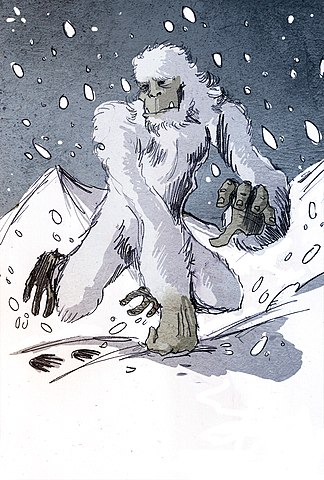
Biological Evolution
STEM
Biodiversity
Edward Hessler
How about a bear? Or bears?
Here are a couple of sentences from the abstract of a paper published November 29, 2017 in the Proceedings of the Royal Society B by Tianyang Lan et. al., on the evolutionary history of bears in the Tibetan Plateau.
Although anecdotally associated with local bears (Ursus arctos and U. thibetanus), the exact identify of 'hominid;-like creatures important to folklore and mythology in the Tibetan Plateau-Himalaya region is still surrounded by mystery. Recently, two purported yeti samples from the Himalayas showed genetic affinity with and ancient polar bear...."
Yetis, abominable snowmen, are Himalayan brown bears. There are two brown bear subspecies, the Himalayan (Ursus artos isabellinus) and the Tibetan (U. a. pruinosus) brown bear.
And how do we know this, i.e., what is the evidence? In the paper above, 24 samples (hair, tissue, bone, feces) were used to examine a sequence of mitochondrial DNA. The samples were obtained from the field and in museum or private collections.
In addition, the research has shed light on the evolutionary history of brown bears. The research group found that Himalayan brown bears diverged very early from other brown bears and have remained isolated from the original source since. On the other hand the Tibetan brown beasr are a much younger population, sharing a common ancestry with existing North American and Eurasian brown bears. The habitats of the two subspecies are geographically close but it is likely that "the high-altitude peaks of the Himalayan Mountains have likely impeded migration between these populations, and subsequently kept them as genetically distinct lineages.
The paper concludes with a typical scientific statement, one that gives an idea of the nature of science. This study represents the most rigorous analysis to date of samples suspected to derive from anomalous or mythical 'hominid'-like creatures, strongly suggesting that the biological basis of the yeti legend is local brown and black bears. (My emphasis. This is a strong claim since the evidence is so good, i.e., likely.
Stories on this paper have been widely reported as even a casual search will show. I include a short report in Science by science writer Sid Perkins.

 CGEE Student Voice
CGEE Student Voice
No comments:
Post a Comment